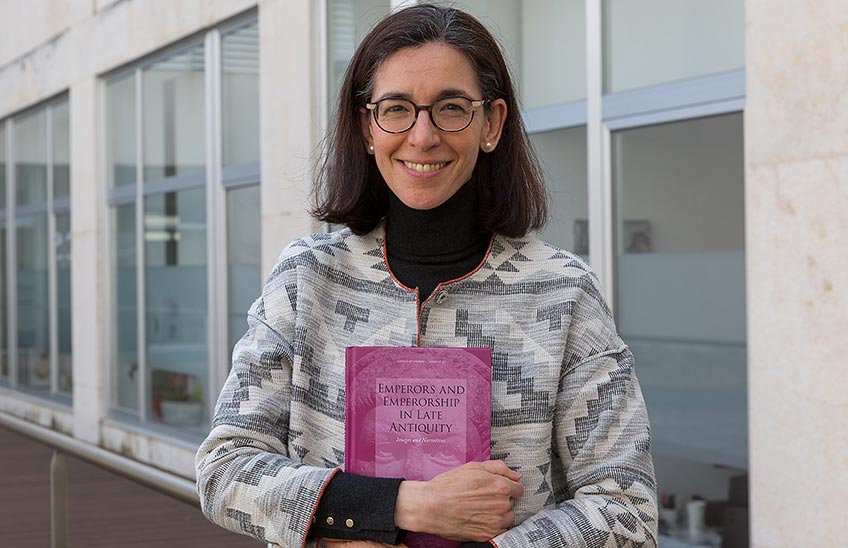"Monuments, inscriptions, coins or speeches were the social networks of the emperors of Ancient Rome."
Professor Pilar García Ruiz analyzes in a book the articulation of the Roman imperial power around iconographic programs and literary strategies.

FotoManuelCastells/Professor Pilar García Ruiz, with a copy of her latest book.
10 | 03 | 2021
"In Ancient Rome, they were concerned with developing an iconographic program according to the story they intended to convey about the emperor. Monuments, inscriptions, coins, speeches, letters, official documents, etc. were the supports of that program, the social networks of the time". This is explained by Pilar García Ruiz, professor of the department of Philology of the School of Philosophy and Letters of the University of Navarra and author of the book Emperors and Emperorship in Late Antiquity: images and narratives, recently published.recently published.
Published by Brill, in the Impact of Empire collection, the work analyzes from an interdisciplinary perspective the way in which the emperors, from Constantine to Theodosius, used word and image to present themselves to their subjects: "The representations of material culture and the texts that were produced in that period were interconnected and fed back much more than has been perceived so far," said García Ruiz. Aimed at scholars and students interested in classics, political history and the history of Christianity, readers will be able to approach the reality of this period through various case studies that show how the image of the emperor "was an icon of how the empire itself was understood during the 4th century".
Thus, in the monograph one can find examples such as the Arch of Constantine, "a stone monument commissioned by the Senate on which one can read the expression arcum triumphis insignem with which it is intended, not only to praise the emperor, but also to express that he had surpassed the triumphal representations of the emperors of the past, with whom he is measured. This explains how the motto semper triumphator was born and spread by imperial propaganda. It is born in an iconographic support, is assumed by the emperor and his entourage and remains fixed as an identifying feature in the various supports".
Emperors and Emperorship in Late Antiquity: images and narratives has its origin in the project of research "Romanitas Principum: Romanidad e interculturalidad en la autorrepresentación imperial tardía antigua: Constantino, Juliano, Teodosio", financed by the Ministry of Economics and Competitividad. Alberto Quiroga, professor of Philology Greek at the University of Granada, has also participated in its edition, and nine researchers from Spain, the Netherlands and Italy have collaborated.
The book can be purchased in ebook format or in hard copy through the website publishing house Brill.
Pilar García Ruiz is professor of department of Philology of the School of Philosophy and Letters of the University of Navarra. Specialist in Late Antique Literature, her main lines of research are Latin Rhetoric and Historiography, and 4th century Latin and Greek prose.
